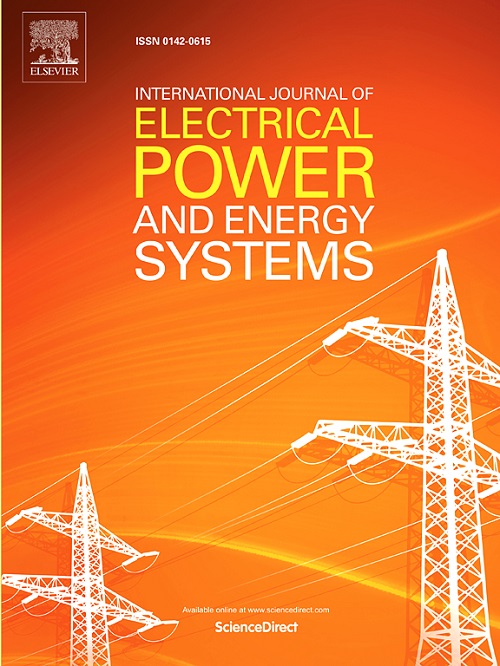基于迁移学习的实用动态安全区域边界快速生成方法
IF 5
2区 工程技术
Q1 ENGINEERING, ELECTRICAL & ELECTRONIC
International Journal of Electrical Power & Energy Systems
Pub Date : 2025-09-17
DOI:10.1016/j.ijepes.2025.111074
引用次数: 0
摘要
可再生能源并网的高比例加剧了电力系统暂态稳定性分析的挑战。基于超平面形式的实用动态安全区域(PDSR)在态势感知和一系列优化问题上具有突出的优势。生成PDSR的关键在于准确、快速地获取足够数量的边界上的临界点。但是,对于系统拓扑发生变化的不同故障,需要重新计算临界点,这就导致了不能快速生成安全区域边界的问题。为此,本文提出了一种基于迁移学习的PDSR边界快速生成方法。首先,利用特征转移最小化已建立故障数据与不同故障操作点之间的分布差异;在此基础上,利用梯度反转层训练和提取已建立故障和不同故障的共同特征,更新域对抗神经网络模型参数,实现对不同故障的临界点识别。最后,基于最小二乘拟合生成PDSR边界。对新英格兰10机39总线系统的分析表明,对于不同于现有故障但又有相似点的故障,该方法不需要重新计算。该方法基于已建立故障的知识和经验,准确、快速地获得生成边界所需的足够临界点,显著提高了不同故障安全区域边界的生成速度。本文章由计算机程序翻译,如有差异,请以英文原文为准。
Transfer learning based fast generation method of practical dynamic security region boundary
The high proportion of renewable energy integration exacerbates the challenges of transient stability analysis of power systems. The practical dynamic security region (PDSR) based on the hyperplane form has outstanding advantages in situation awareness and a series of optimization problems. The key to generating PDSR lies in accurately and quickly obtaining a sufficient number of critical points located on the boundary. However, for different faults with changes in system topology, it is necessary to recalculate the critical points, which leads to the problem of not being able to quickly generate the security region boundary. Therefore, this paper proposes a rapid generation method for the PDSR boundary based on transfer learning. Firstly, feature transfer is used to minimize the distribution difference between the data of established faults and different fault operating points. On this basis, the gradient reversal layer is utilized to train and extract common features of established faults and different faults, update the parameters of the domain adversarial neural network model, and realize the identification of critical points for different faults. Finally, the PDSR boundary is generated based on the least squares fitting. The analysis of the New England 10-machine 39-bus system shows that for faults different from established ones but with similarities, the proposed method does not require recalculation. Based on the knowledge and experience of established faults, it accurately and quickly obtains the sufficient critical points needed to generate the boundary, significantly improving the generation speed of the security region boundary for different faults.
求助全文
通过发布文献求助,成功后即可免费获取论文全文。
去求助
来源期刊
CiteScore
12.10
自引率
17.30%
发文量
1022
审稿时长
51 days
期刊介绍:
The journal covers theoretical developments in electrical power and energy systems and their applications. The coverage embraces: generation and network planning; reliability; long and short term operation; expert systems; neural networks; object oriented systems; system control centres; database and information systems; stock and parameter estimation; system security and adequacy; network theory, modelling and computation; small and large system dynamics; dynamic model identification; on-line control including load and switching control; protection; distribution systems; energy economics; impact of non-conventional systems; and man-machine interfaces.
As well as original research papers, the journal publishes short contributions, book reviews and conference reports. All papers are peer-reviewed by at least two referees.

 求助内容:
求助内容: 应助结果提醒方式:
应助结果提醒方式:


